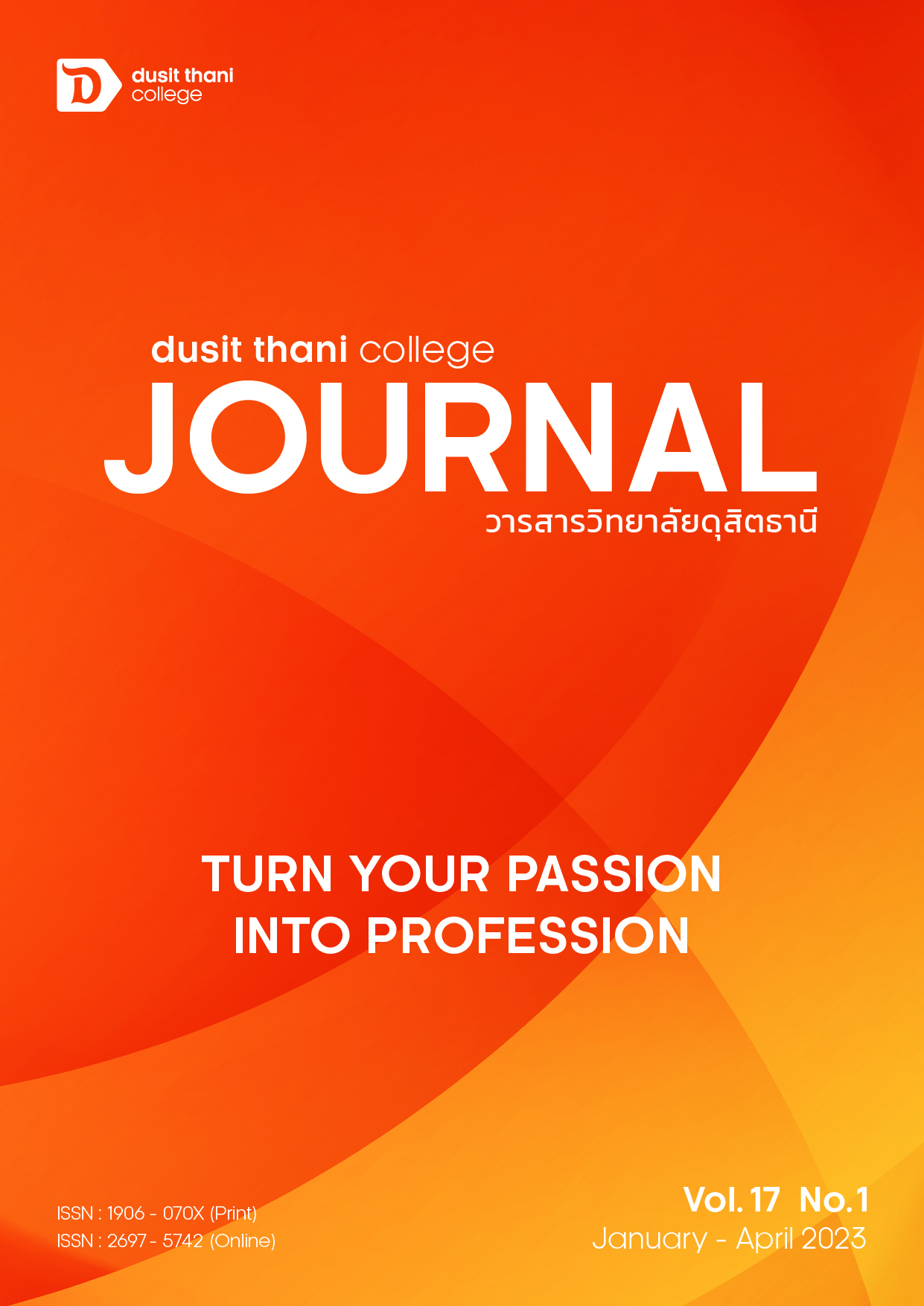Development of Gluten-Free Cookies Products from Coconut Flour Mixed with Banana Flour
Main Article Content
Abstract
The objectives of this research are 1) to investigate the amount of banana flour mixed with coconut flour in gluten-free cookie recipes, 2) to investigate the appropriate isomalt content as a sugar substitute in cookies made from coconut flour and banana flour, and 3) to investigate the nutritional value of cookies made from coconut flour and banana flour. Evaluated based on preference testing by sensory panelist. The study found that a proportion of 20% banana flour is suitable to replace coconut flour in coconut flour cookie recipes to improve the texture (aftertaste) of the cookies and make them easier to eat. The use of isomalt as a 20% sugar substitute is suitable for cookies made with coconut flour mixed with banana flour. Coconut flour cookies with banana flour using isomalt in larger amounts as a sugar substitute cause the dough of the cookies to be weaker, the size of the pieces to be wider and thinner, and the color to be lighter. The color values L* (lightness) 65.86±1.42 a* (red) 9.47 ± 0.87 and b* (yellow) 24.83±0.50. The water activity value (Aw) was 0.28, which tends to decrease compared to sugar-based recipes of 0.35. The nutritional value of cookies made from coconut flour mixed with banana flour and using isomalt as a substitute for 20% sugar provides a total energy of 5.58 kcal/g. The ash content was 2.72%, fat content was 38.18%, moisture content was 2.96%, protein content was 6.65%, and carbohydrate content was 49.49%, which has a similar nutritional value to the basic coconut flour cookies.
Article Details

This work is licensed under a Creative Commons Attribution-NonCommercial-NoDerivatives 4.0 International License.
Article Screening Policy
- All research and academic articles to be published must be considered and screened by three peer reviews in the relevant field / article.
- All articles, texts, illustrations and tables published in the journal are the personal opinions of the authors. Editors don't always have to agree. And no responsibility whatsoever is the sole responsibility of the author.
- The articles to be published must never be published. Where did you first publish? And not in the consideration of other journals If the audit found that there has been a duplicate publication It is the sole responsibility of the author.
- Any article that the reader sees as being plagiarized or impersonated without reference. Or mislead the work of the author Please let the journal editor know it will be your greatest blessing.
References
Akesowan, A. (2009). Quality of Reduced-Fat Chiffon Cakes Prepared with ErythritolSucralose as Replacement for Sugar. Pakistan Journal of Nutrition. 8(9), 1383-1386.
AOAC. (2000). Official Methods of Analysis. 17th ed. Gaithersburg. The Association of Official Analytical Chemists.
Charoenphun, N. and Phanmool, J. (2020). Development of Gluten-free Alpinia nigra Burrt Cookies. Thai Science and Technology Journal. 28(4), 642-655.
Jammake J. and Naivikul O. (2011). Basic Baking Science and Technology. Bangkok: Kasetsart University Press.
Klamklomjit, S., Wooti, C. and Leelahapongstom, A. (2022). The Product Development of Riceberry Cookie Stuffed with Pineapple. Burapha Science Journal. 27(2), 1357-1374.
Luangon, P. (2022). Coconut Flour Mixed with Banana Flour Cookies. Thesis research of Master in Home Economics. Faculty of Home Economics Technology. Rajamangala University of Technology Phra Nakhon.
Manarote, A., Tubbiyam, P., Khuaikhoen, W. and Phurahong, B. (2018). Substitute for Banana Flour Using Partially Wheat Flour Sa Lee Krob Product. Faculty of Home Economics Technology. Rajamangala University of Technology Phra Nakhon.
Noiduang, P. and Bandit, N. (2015). Utilization of Maltitol and Sucralose in Low-Calories Butter Cookies Production. Apathetic International Journal. 4(2), 42-51.
Peeraphatchara, J. (2004). Bakery Product from Banana Flour. Odeon Store: Bangkok 136 pp.
Rongchoung, J. and Luangsakui, N. (2018). Development of Cookies Product from Selected Gluten-Free Flours. Phranakhon Rajabhat Research Journal. 13(2), 34-45.
Siriwattanasilp, A. and Siriwongwilaichat, P. (2021). The Effect of Sugar Substitutes on Physicochemical and Microstructure Properties of Reduced Sugar Coconut Milk Jelly. Thesis research for Master of Science. Department of Food Technology. Silpakorn University.
Srichayet, P. (2004). Effect of Manufacturing Conditions and Thermal Processing on Physical and Chemical Characteristics of Caramels. Thesis research for Master of Science. Department of Food Technology. Silpakorn University.
Sriroth, K. (1999). Sweetners. Chapartech Center Bangkok.
Srisakul, M. (2000). Study on the preparation of coconut flour from coconut residue from the processing process. Faculty of Apply Science. King Mongkut’s University of Technology of North Bangkok.
Wangpankhajorn, P., Maneechot, S., Junsi, M., Jannu, T. and Samakradhamrongthai, R. S. (2020). Effect of Substitution of Wheat Flour with Sungyod Rice Flour on Physical and Sensory Qualities in Cookies. Journal of Science and Technology. 9(2), 56-63.
Wetwitayaklung, P. (2013). Coconut Proteins. Thai Bulletin of Pharmaceutical Science. 8(1), 9-18.
Yodsarn, S. (2019). A Study of Potassium and Magnesium in Banana Flour for Substituting Wheat Flour in Healthy Cookie Product. Doctoral dissertation. Faculty of Agricultural Technology.


